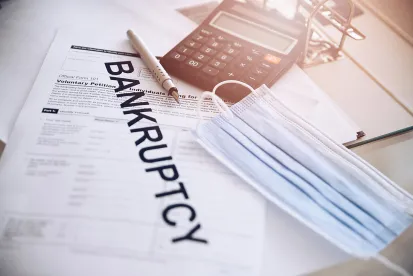Last week this author delved into what has become known as the “Texas Two-Step,” the arguments for and against its permissibility and the broader implications for the bankruptcy system. The discussion focused on an ongoing trial on motions filed in the bankruptcy case of LTL Management, LLC (“LTL” or the “Debtor”), a Johnson & Johnson (“J&J”) subsidiary, by the Official Committee of Talc Claimants and several other parties, seeking an order dismissing the Debtor’s case pursuant to section 1112(b) of the Bankruptcy Code on the basis that the case was not filed “in good faith.” In re LTL Mgmt. LLC, Case No. 21-30589 (MBK) [Docket No. 1572] (Bankr. D.N.J. 2021). Following conclusion of a five day trial, last Friday Chief Bankruptcy Judge Michael B. Kaplan of the District of New Jersey denied the motions in a 56 page opinion, which can only be described as both a passionate defense of the ability of bankruptcy courts to effectively adjudicate mass tort cases as well as a whole-hearted stamp of approval of the Texas Two Step strategy as implemented by the Debtor under the particular facts of its case. In a separate ruling (which will not be discussed here), Judge Kaplan granted the Debtor’s motion to extend the automatic stay to J&J and other related parties in order to halt ongoing related litigation which could adversely impact LTL’s bankruptcy estate.
Judge Kaplan initially found that in order to determine whether the Debtor was pursuing a valid bankruptcy purpose, the court needed to “examine a far more difficult issue—whether there is available to Debtor and the tort claimants a more beneficial and equitable path toward resolving Debtor’s ongoing talc-related liabilities.” Judge Kaplan answered this question by stating that “this Court holds a strong conviction that the bankruptcy court is the optimal venue for redressing the harms of both present and future talc claimants in this case—ensuring a meaningful, timely, and equitable recovery.” Judge Kaplan thus easily found that the Debtor’s chapter 11 case was filed in good faith and served a valid bankruptcy purpose in seeking to address more than 38,000 ovarian cancer and mesothelioma claims:
Let’s be clear, the filing of a chapter 11 case with the expressed aim of addressing the present and future liabilities associated with ongoing global personal injury claims to preserve corporate value is unquestionably a proper purpose under the Bankruptcy Code.
While the court then engaged in a detailed factual and legal analysis of all of the issues raised by the motions—including the testimony of both sides’ witnesses at trial—it front-loaded its opinion with a lengthy and exhaustive review of the background leading up to the filing of the LTL case, the problems inherent in timely and effectively adjudicating tens of thousands of mass torts claims and the unique suitability of the bankruptcy courts—as courts of equity—to coral all such claims for a prompt and fair resolution. According to the court, “Debtor’s efforts to address the financially draining mass tort exposure through a bankruptcy is wholly consistent with the aims of the Bankruptcy Code.”
The court first laid out the Third Circuit’s standard under which the motions were to be considered, e.g., that “a Chapter 11 petition is subject to dismissal for ‘cause’ under 11 U.S.C. § 1112(b) unless it is filed in good faith.” In re SGL Carbon Corp., 200 F.3d 154, 162 (3d Cir. 1999). The court then noted that “[a]ll parties acknowledge that the general focus must be ‘(1) whether the petition serves a valid bankruptcy purpose and (2) whether the petition is filed merely to obtain a tactical litigation advantage.’” The court had “little trouble finding that the [Debtor’s] chapter 11 filing serves to maximize the property available to satisfy creditors by employing the tools available under the Bankruptcy Code to ensure that all present and future tort claimants will share distributions through the court-administered claims assessment process.”
While noting that “remedial creditor actions addressing the pre-petition divisive merger and restructuring remain available for creditors to pursue, if necessary,” the court soundly rejected the arguments of the movants that the Texas Two-Step implemented in the LTL case was a nefarious scheme designed to harm its creditors:
From the outset, J&J and Debtor have been candid and transparent about employing Debtor’s chapter 11 filing as a vehicle to address the company’s growing talc-related liability exposure and costs in defending the tens of thousands of pending ovarian cancer claims and hundreds of mesothelioma cases, as well as future claims. As Movants’ own experts have acknowledged, the use of the Texas divisional merger statute and subsequent filing by the newly formed LTL constituted a single integrated transaction designed to allow “New JJCI to continue to operate Johnson & Johnson’s Consumer Health business in the United States without interruption and provide LTL with the opportunity to pursue process to resolve current and future [cl]aims in an equitable and efficient manner.”
Importantly, the court also found that “there is no evidence … that Debtor or its predecessor. . . manufactured a limited fund by undervaluing or limiting assets.” Instead, the court found that “any such limited fund is the product of overwhelming potential talc liabilities, which far exceed Debtor’s (and Old JJCI’s) capacity to satisfy through current available assets.”
Not only did the Court find no fault in the actions of LTL and J&J, it effectively concluded that their actions were beyond reproach:
Throughout their submissions and oral argument, Movants have decried Debtor’s (and its affiliated entities’) efforts to “cap” the liabilities owing the injured parties. Likewise, there have been emotive contentions that the chapter 11 process offers Debtor—as well as J&J and other affiliates—an unfair advantage, or upper hand in protecting assets and escaping liabilities and exposure. The Court does not share these views. Frankly, it is unsurprising that J&J and Old JJCI management would seek to limit exposure to present and future claims. Their fiduciary obligations and corporate responsibilities demand such actions. Nonetheless, merely seeking to limit liabilities, standing alone, does not demonstrate “bad faith” for purposes of filing under chapter 11. If that were so, nary a debtor would meet the “good faith’ requirements. Rather, the Court finds this chapter 11 is being used, not to escape liability, but to bring about accountability and certainty. The record before the Court does not reflect assets that have been ring-fenced, concealed, or removed. Neither J&J nor New JJCI (nor any J&J affiliate for that matter) are to be released from liability, or their assets placed out of reach of creditors, absent a negotiated settlement under a plan in which J&J’s and New JJCI’s roles and funding contributions warrant a release as a matter of both law and fact. True, a handful of claimants who have secured judgments may be delayed by the bankruptcy process, but this Court must act to ensure justice for all the nearly 40,000 current claimants and undetermined future injured parties (and families) who face years in litigation. Also, it is nonsensical to accept the notion that J&J and Old JJCI would bear the brunt of public and judicial scrutiny, as well as the time and costs to implement this integrated transaction, simply to stall claimants or walk away from its financial commitments under the Funding Agreement.
Aside from resolving the issue before it, the court addressed—effectively in real-time—a number of issues which have placed aspects of current bankruptcy practice under attack, including non-consensual third-party releases, exceedingly expedited chapter 11 cases and forum shopping. Moreover, Judge Kaplan made an impassioned defense of existing bankruptcy processes and the practices of bankruptcy courts and judges:
There is no question that, over time, our bankruptcy courts have witnessed serious abuses and inefficiencies, striking at the heart of the integrity of our bankruptcy courts. For instance, the approval of overly broad nonconsensual third-party releases, and the propriety/necessity for twenty-four hour accelerated bankruptcy cases have drawn deserved scrutiny. Likewise, the selection of case venue, as in the matter at hand, has warranted critical attention and debate. In point of fact, there has been a deluge of critical commentary in recent months by academics, commentators, and even policymakers challenging the shortfalls of the bankruptcy system and calling for reform. Some have even employed such distasteful, click-generating insidious phrases as “morally corrupt” or “lawless” in reference to the bankruptcy courts. No one can deny that there are situations in which tools and strategies have been abused and warrant critical review. Unfortunately, however, these commentators choose to focus on the limited failings of the system, as opposed to its innumerable successes. Every one of the Court’s 370 plus colleagues on the bankruptcy bench can point to successful case outcomes where large and small businesses are reorganized, productive business relationships are maintained, jobs preserved and, most importantly, meaningful returns distributed to creditors—all in situations where outside of the bankruptcy system there would be fewer if any identifiable benefits, and the parties left to expensive and time-consuming litigation. This holds especially true for mass tort situations, including asbestos bankruptcies, in which § 524(g) trusts and comparable non-asbestos trust vehicles have been established to ensure meaningful, timely recoveries for present and future suffering parties and their families.
In another unusual step, the court utilized other ongoing—yet not yet completely resolved—chapter 11 cases of intense current public interest in support of its conclusions regarding the propriety of LTL’s bankruptcy:
In recent weeks and months, we have seen comprehensive and productive mediated settlements, producing hundreds of millions of dollars in funding of settlement trusts. Indeed, we need look only at the USA Gymnastics settlement approaching $400 million, the proposed Mallinckrodt $1.7 billion trust and the Boy Scouts proposed settlement nearing $3 billion as examples. Likewise, settlement trusts are in some stage of negotiation in over thirty Catholic Church diocese cases across the country. The Court places these positive results against a backdrop of dozens of successful asbestos trust cases created over the years pursuant to § 524(g), which continue to fund payments to asbestos victims. Claims reconciliation through these bankruptcy trusts place reduced evidentiary and causation burdens on the injured and their families, and resolution of claims and payments to victims can be achieved at a far more expeditious pace than through uncertain litigation in the tort system.
Finally, the court noted that—at the end of the day—LTL’s attempts to resolve its mass-tort liability through the chapter 11 process will still need to meet the confirmation hurdle:
Moreover, remedial creditor actions addressing the pre-petition divisive merger and restructuring remain available for creditors to pursue, if necessary. It is appropriate to note that the true leverage remains where Congress allocated such leverage, with the tort claimants who must approve of any plan employing a § 524(g) trust by a 75% super majority. In filing this chapter 11, Debtor faces a risk that good-faith negotiations will not produce the consensus necessary to confirm a plan; notwithstanding, the Court hopes and expects the parties to undertake a sensible, pragmatic and reasonable approach to negotiations.
Although much of Judge Kaplan’s decision constitutes dicta, his opinion has broad implications and surely will be studied and relied upon in arguments made on a host of issues in courts around the country—at least until it is reviewed on appeal, where the moving parties have intimated the decision will now be headed. Indeed, the court itself clearly recognized the import of its decision, stating that “in ruling today, however, this Court considers only the facts and applicable law relevant to this case, and this case only, and there is no expectation that this decision will be the final word on the matters.”




 />i
/>i

